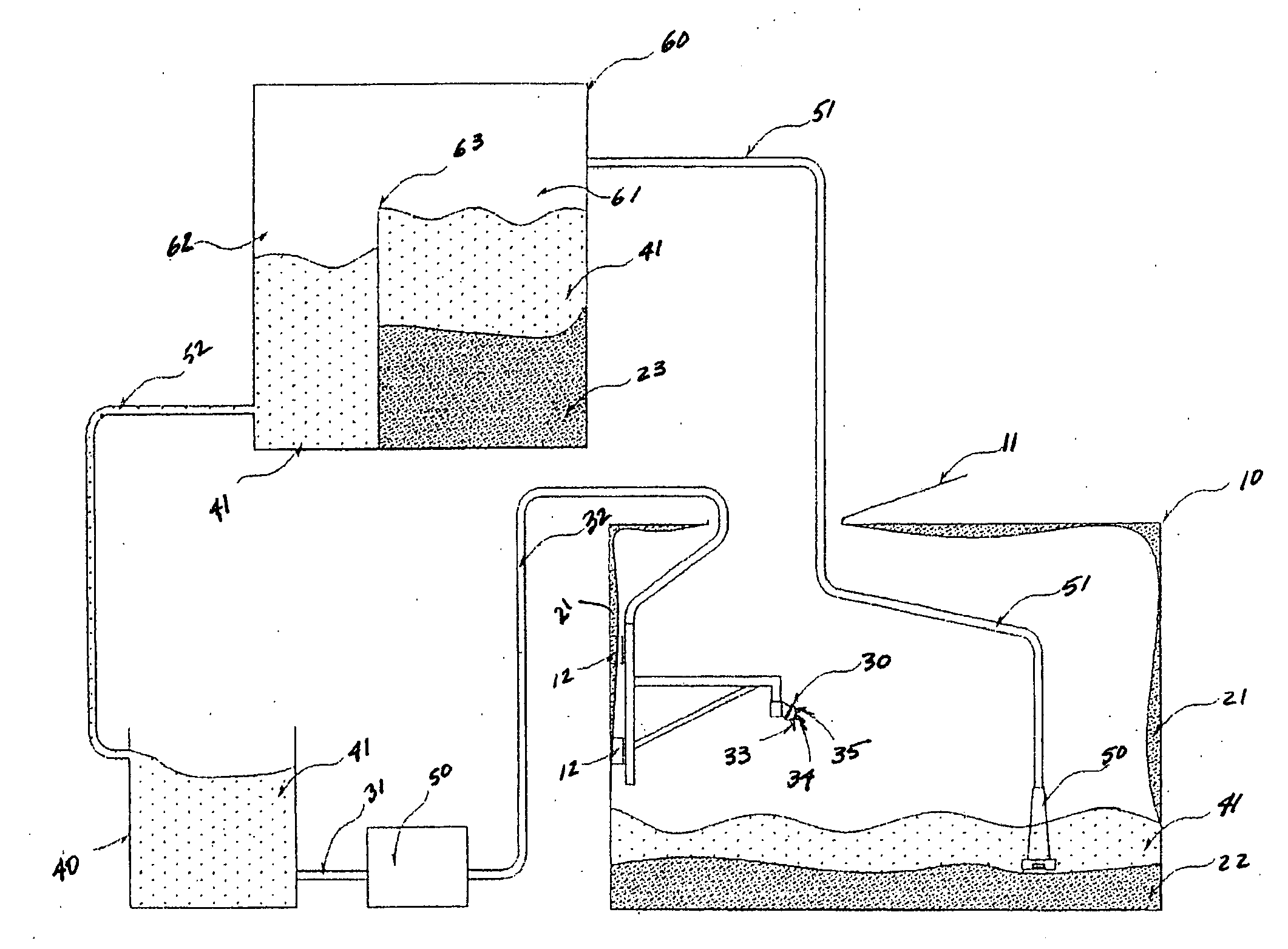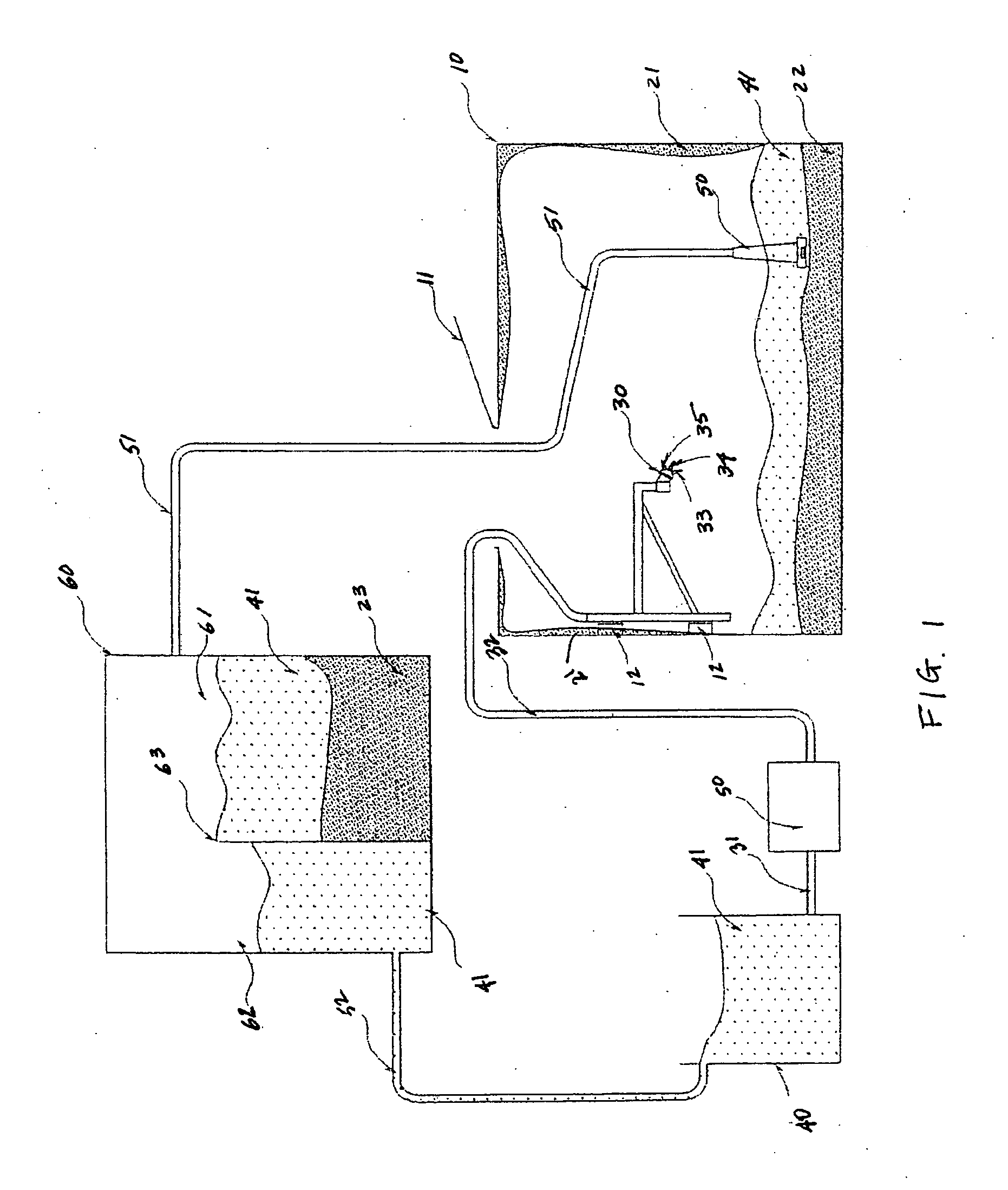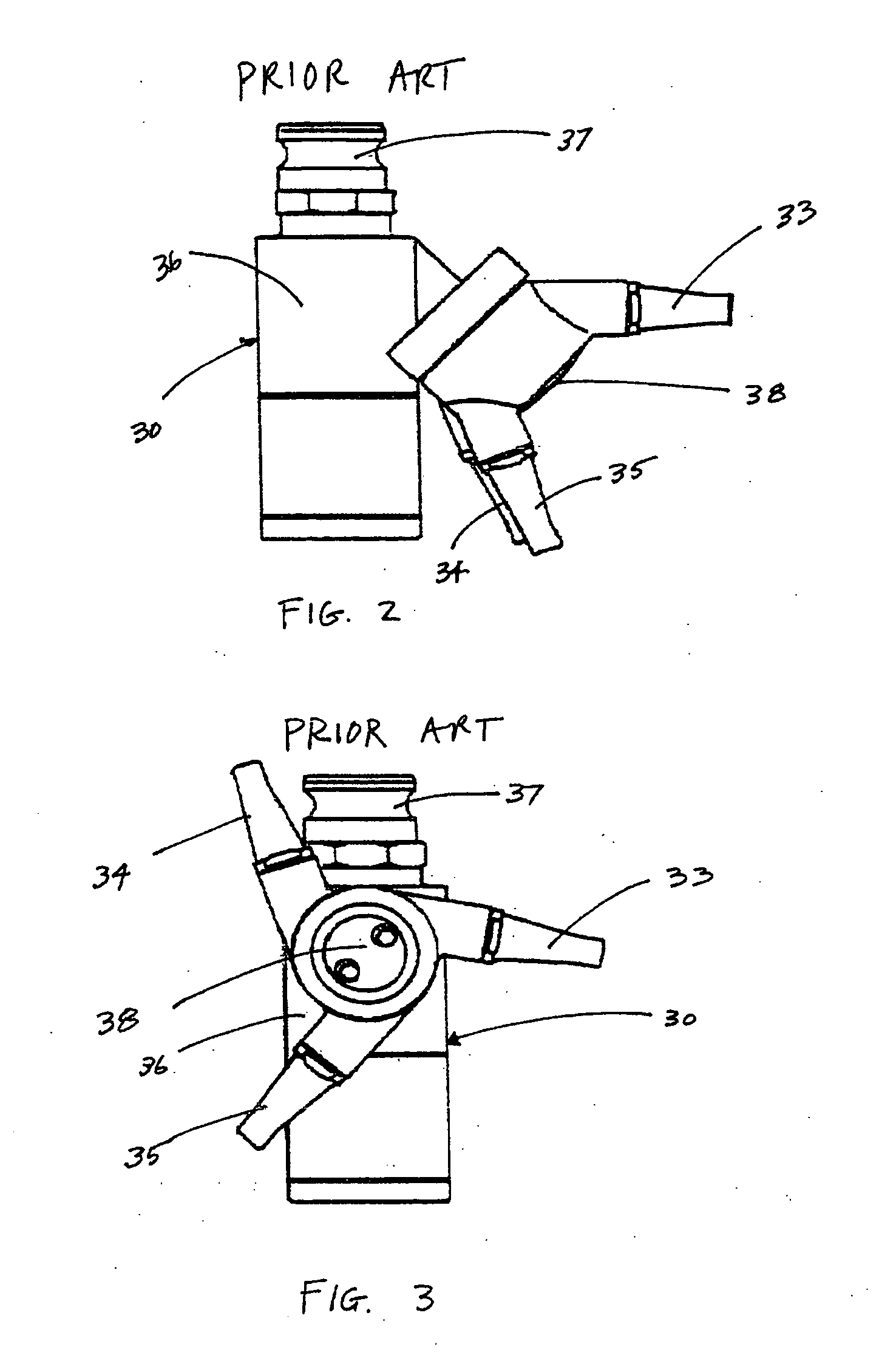Method and apparatus for cleaning tanks and other containers
a technology for cleaning tanks and other containers, applied in the direction of cleaning using liquids, special purpose vessels, transportation and packaging, etc., can solve the problems of limited tank capacity of boats and/or drilling rigs, oil-based and synthetic-based drilling fluids, harmful to personnel and the environment, etc., to improve cleaning performance and efficiency, reduce waste water volume, and reduce exposure of personnel
- Summary
- Abstract
- Description
- Claims
- Application Information
AI Technical Summary
Benefits of technology
Problems solved by technology
Method used
Image
Examples
Embodiment Construction
[0035]Referring to the drawings, FIG. 1 depicts a schematic view of the cleaning apparatus of the present invention. Tank 10, having access hatch 11, represents a storage tank to be cleaned. Although the present invention can be used to clean any number of tanks having different sizes, shapes and / or configurations, and containing any number of different fluids, tank 10 is described herein as a storage tank for drilling fluids and / or other solids-laden fluids, such as may be routinely encountered on boats and / or drilling rigs. Tank 10 contains drilling fluid residue 21 on certain internal surfaces of tank 10, as well as hardened solids 22 deposited at or near the bottom of tank 10. However, such description is for illustration only and is not intended to limit the scope of the present invention to a particular application or type of tank / enclosure to be cleaned.
[0036]The cleaning apparatus of the present invention comprises at least one sprayer device 30 beneficially mounted within ...
PUM
 Login to View More
Login to View More Abstract
Description
Claims
Application Information
 Login to View More
Login to View More - R&D
- Intellectual Property
- Life Sciences
- Materials
- Tech Scout
- Unparalleled Data Quality
- Higher Quality Content
- 60% Fewer Hallucinations
Browse by: Latest US Patents, China's latest patents, Technical Efficacy Thesaurus, Application Domain, Technology Topic, Popular Technical Reports.
© 2025 PatSnap. All rights reserved.Legal|Privacy policy|Modern Slavery Act Transparency Statement|Sitemap|About US| Contact US: help@patsnap.com



